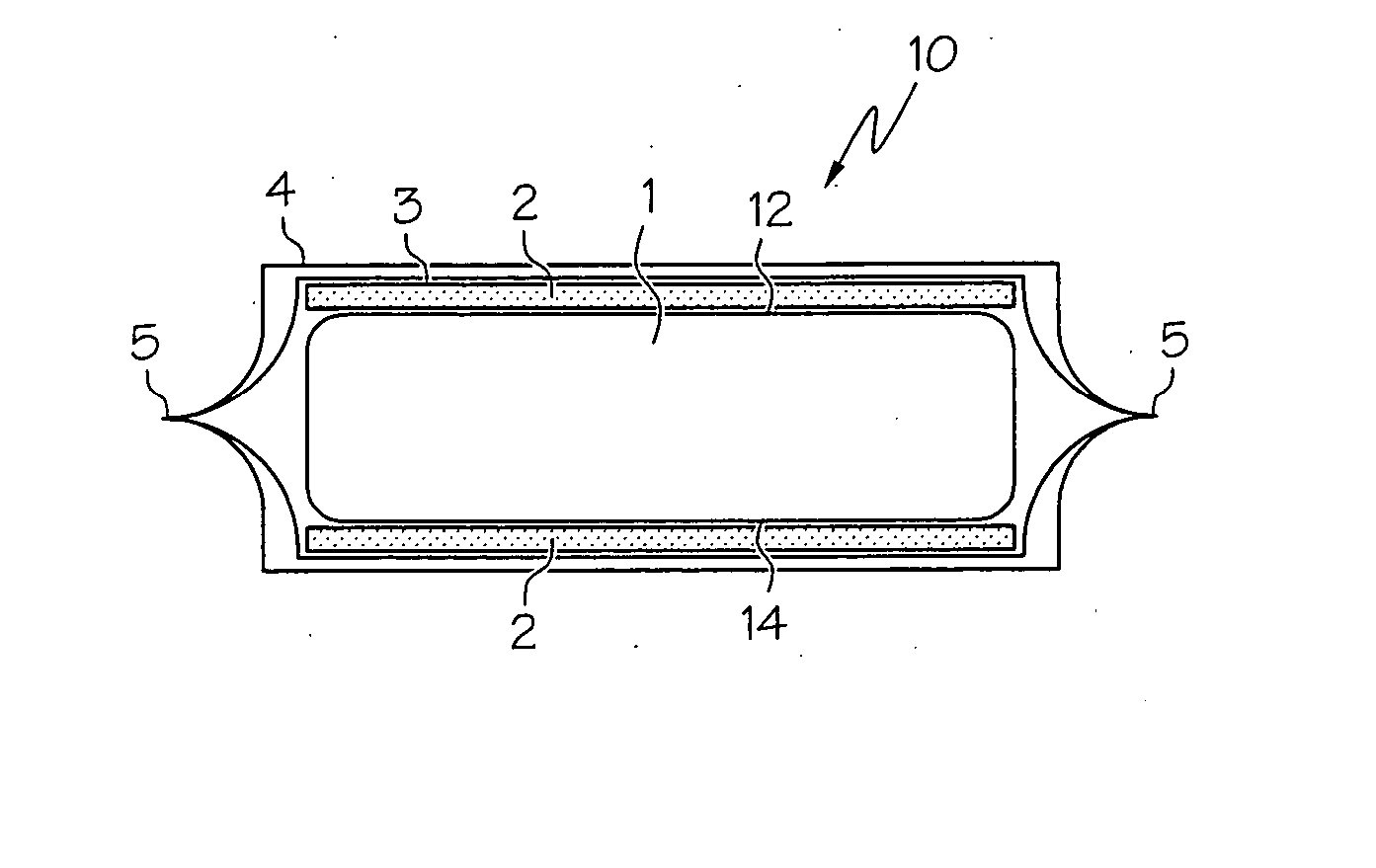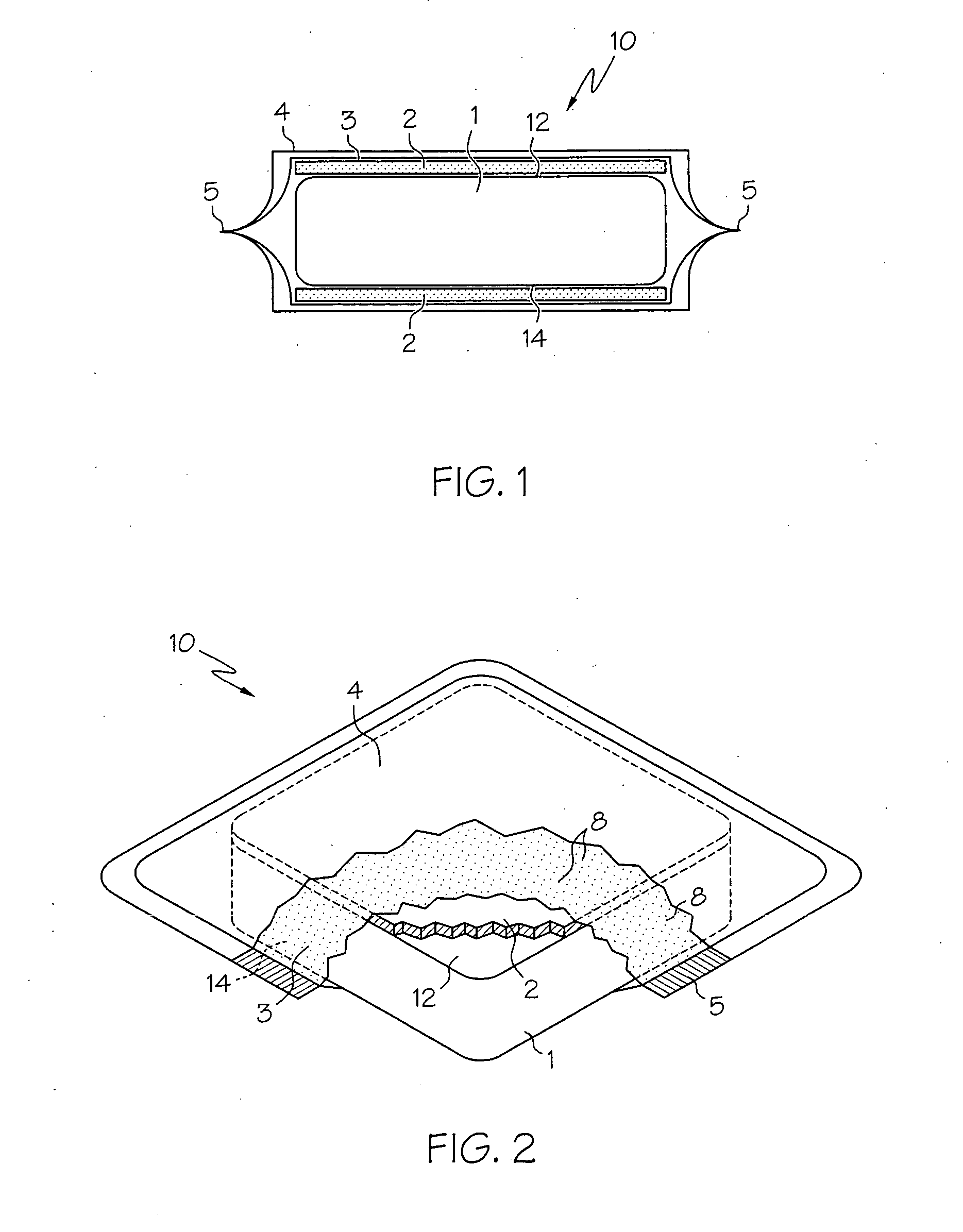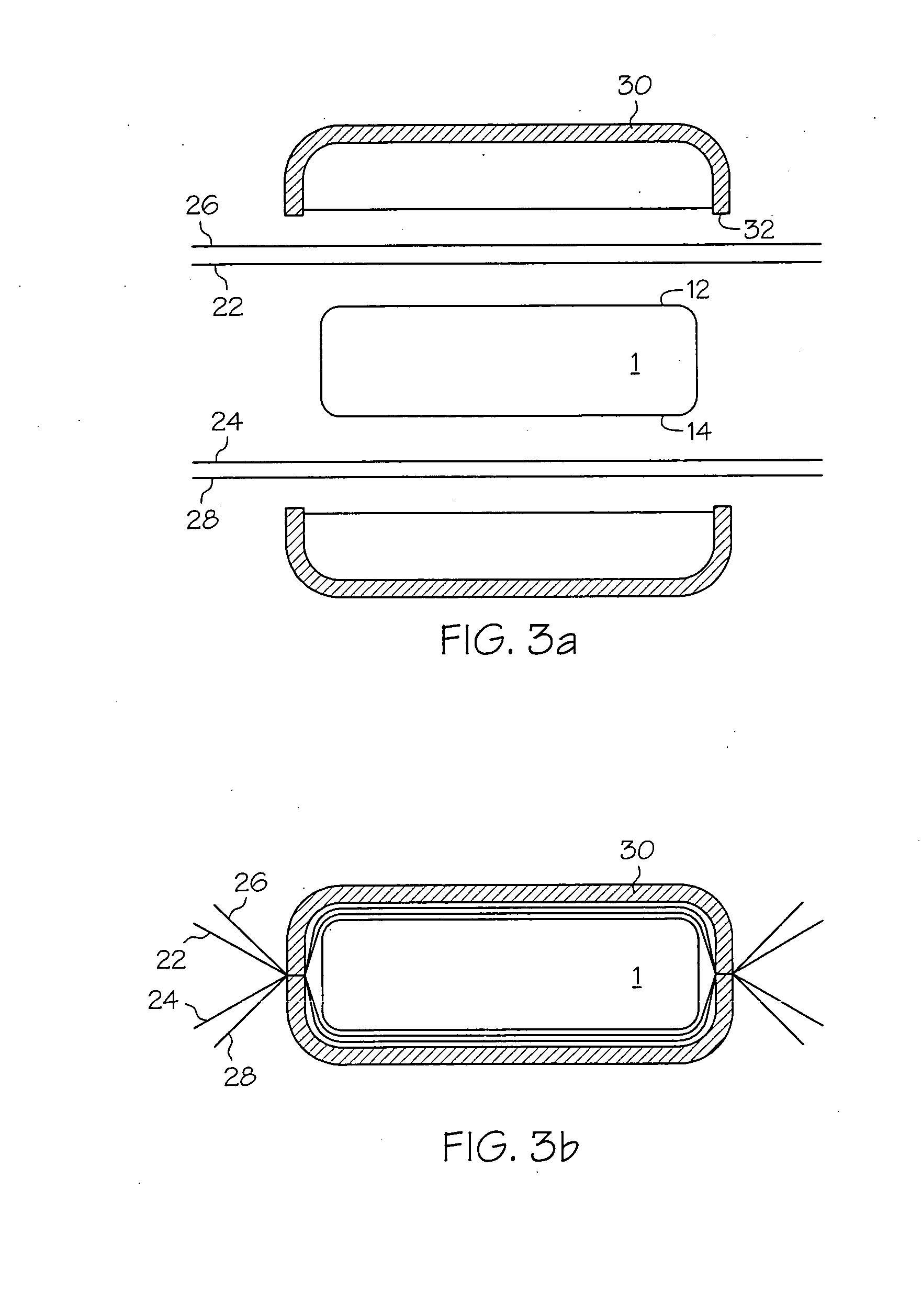Energy-absorbing pads
a technology of energy-absorbing pads and pads, which is applied in the field of energy-absorbing pads, can solve the problems of not providing comfort to users, destroying the structure of pads, and affecting the comfort of users, and the coating material used to cover pads is both expensive and difficult to apply
- Summary
- Abstract
- Description
- Claims
- Application Information
AI Technical Summary
Problems solved by technology
Method used
Image
Examples
example
[0057] A semi-rigid viscoelastic foam pad measuring nominally 3⅜″×2″×¾″ was encapsulated within a polyurethane film having nominally the same dimensions as applied. The polyurethane film was composed of Dureflex™PT9400S supplied by on one side of the foam pad, and Dureflex™PT6100S on the other side, which films were joined together around the perimeter of the pad as further explained below. The encapsulated pad was further enclosed within a textile covering, one side of which was made from a pile fabric similar to a Velcro and the other side of which was made from a wicking fabric such as a cotton fabric. To prepare this construction, one ply of Dureflex™PT9400S polyurethane film, 5 mil thick, one ply of Dureflex™PT6100S, 2 mils thick, one ply of Velcro pile fabric and one ply of wicking fabric were die cut to oversized dimensions relative to the pad. The polyurethane film, Velcro and wicking fabric sheets then were then perforated using a 0.005″ diameter beveled-point needle. The p...
PUM
 Login to View More
Login to View More Abstract
Description
Claims
Application Information
 Login to View More
Login to View More - Generate Ideas
- Intellectual Property
- Life Sciences
- Materials
- Tech Scout
- Unparalleled Data Quality
- Higher Quality Content
- 60% Fewer Hallucinations
Browse by: Latest US Patents, China's latest patents, Technical Efficacy Thesaurus, Application Domain, Technology Topic, Popular Technical Reports.
© 2025 PatSnap. All rights reserved.Legal|Privacy policy|Modern Slavery Act Transparency Statement|Sitemap|About US| Contact US: help@patsnap.com



